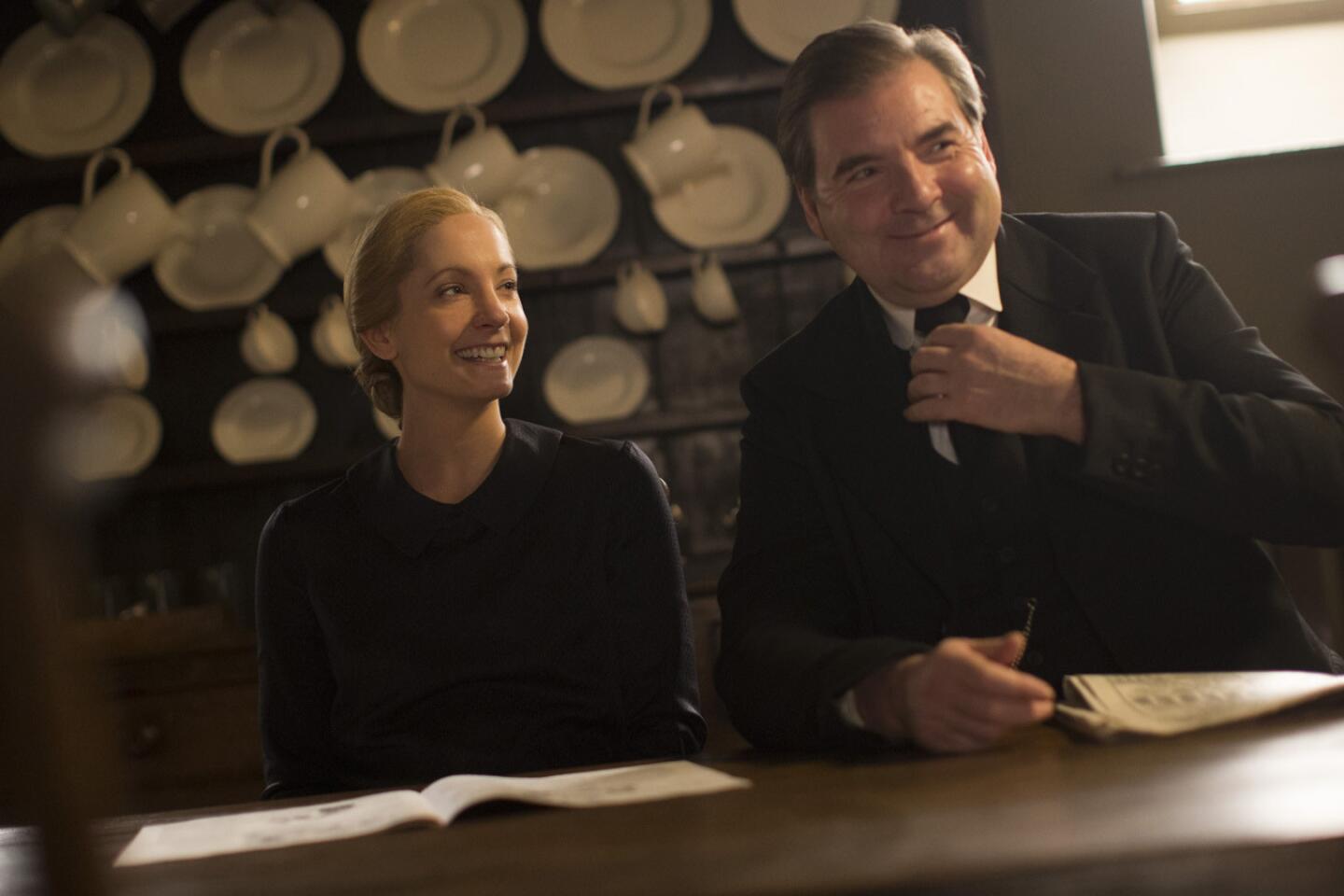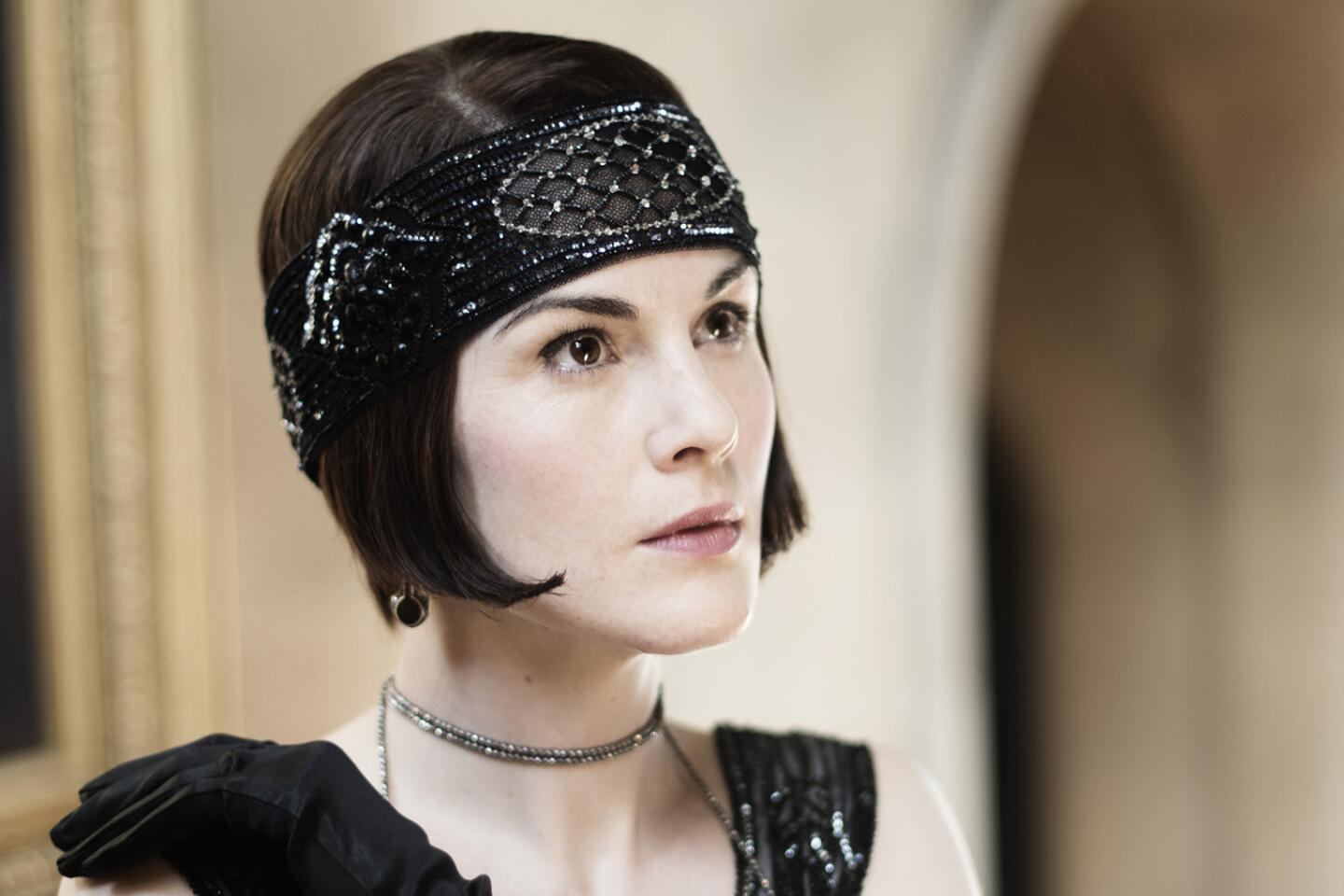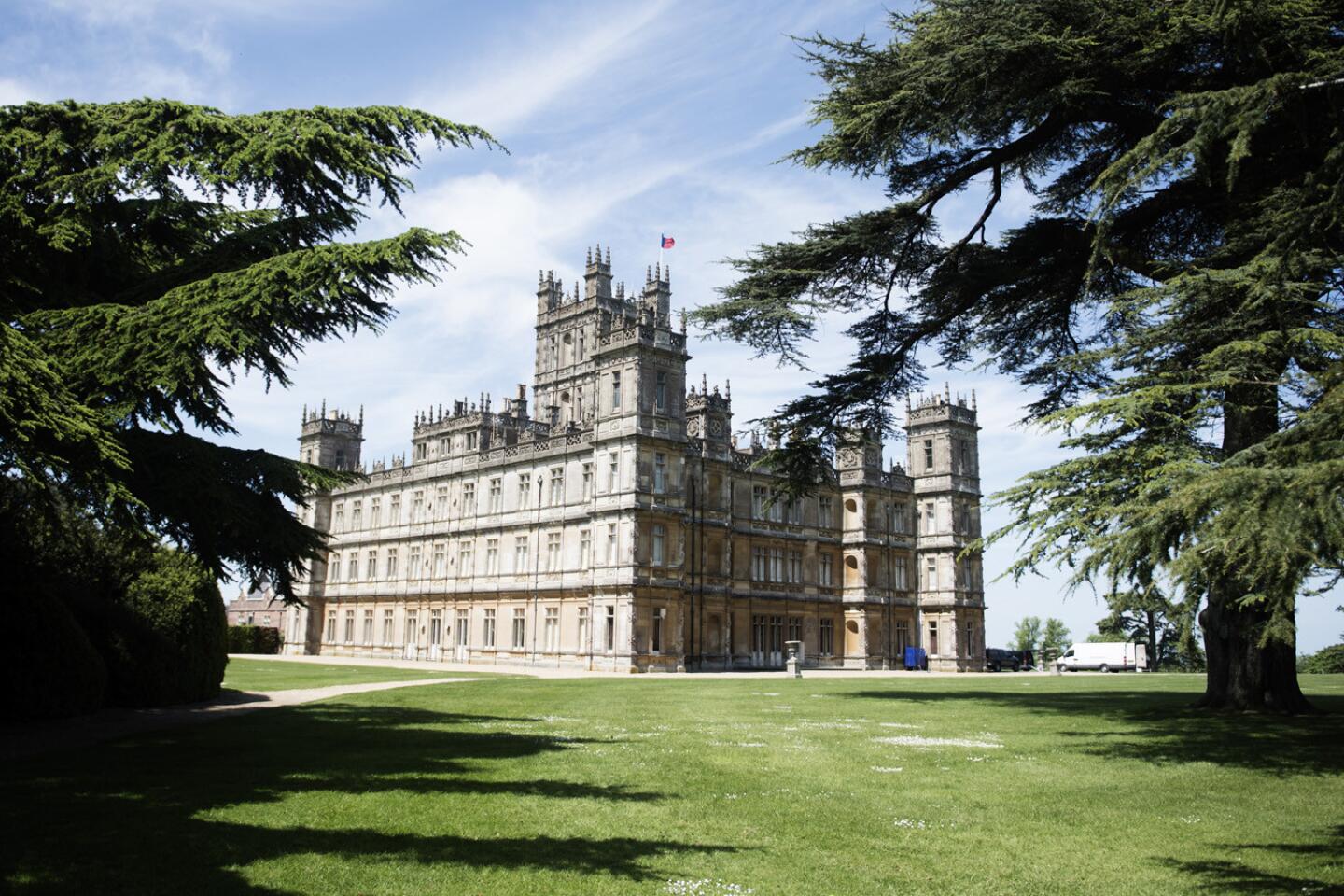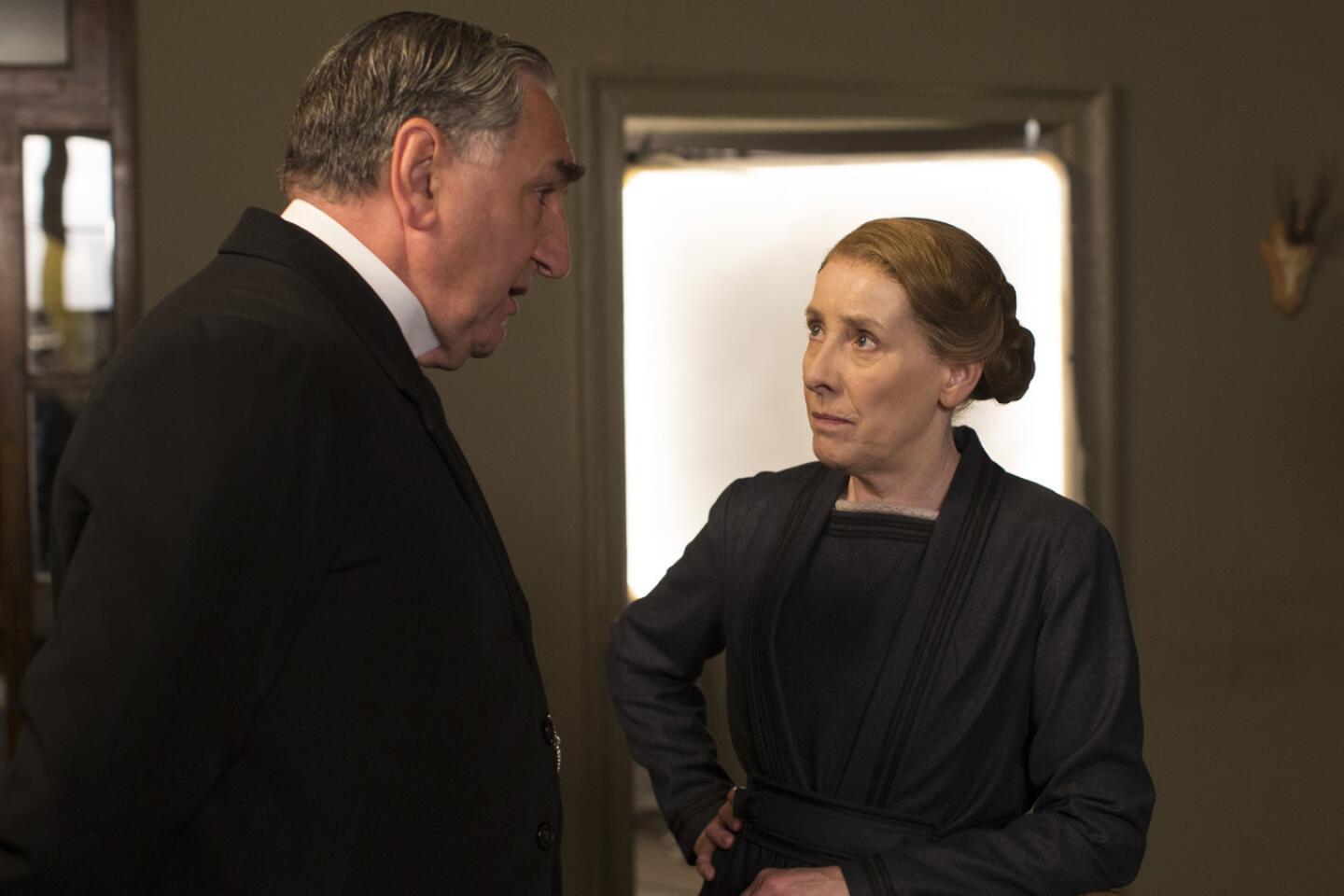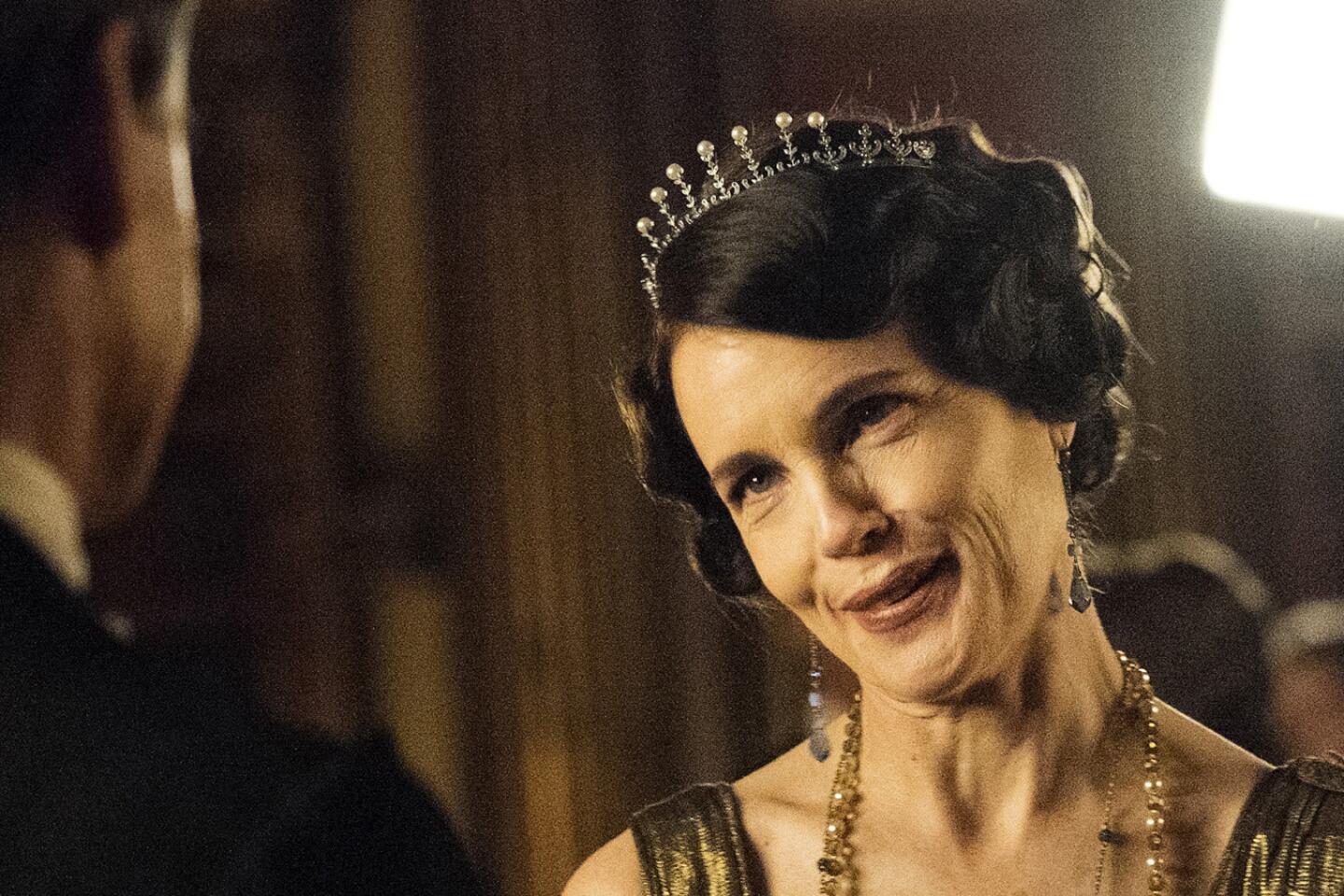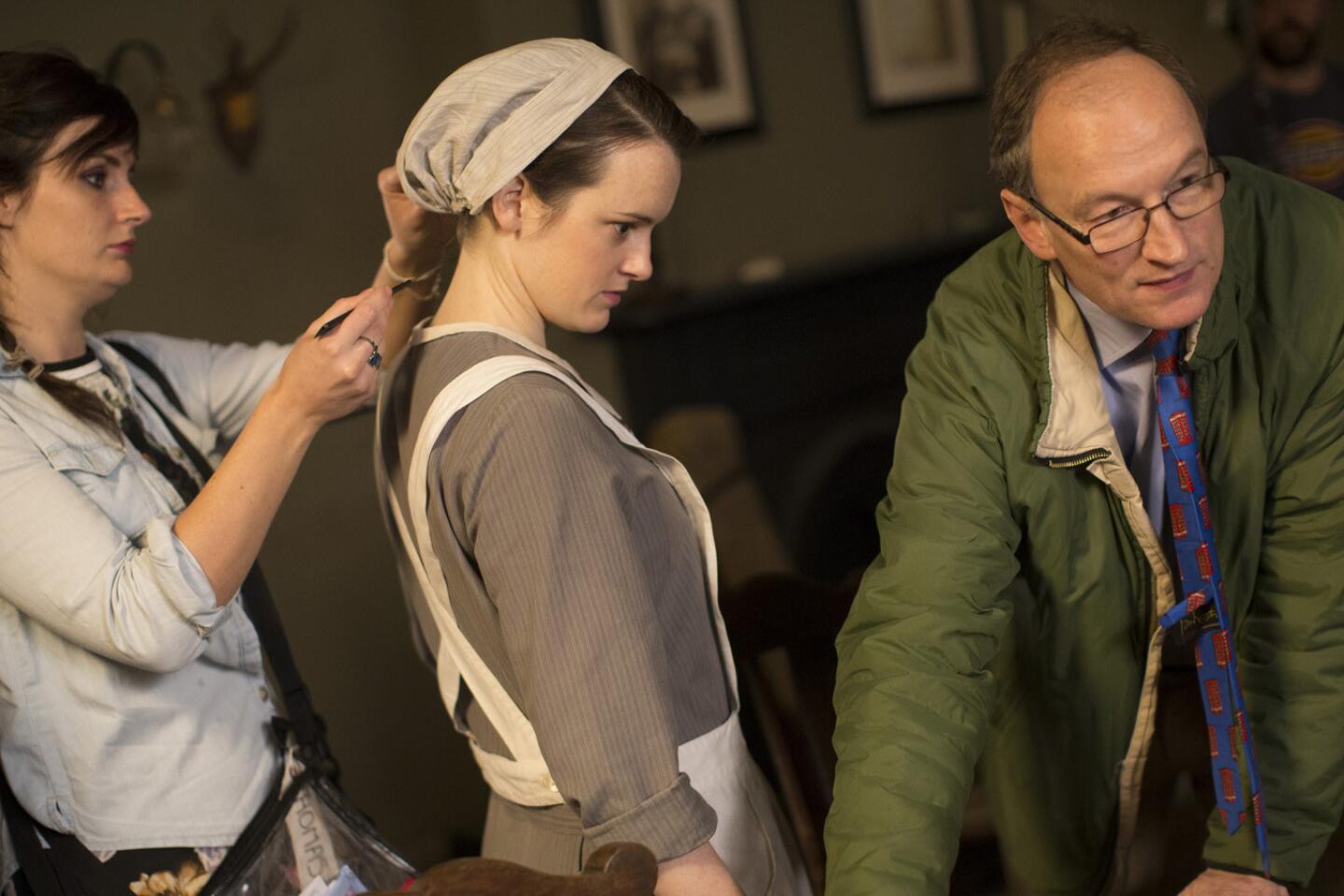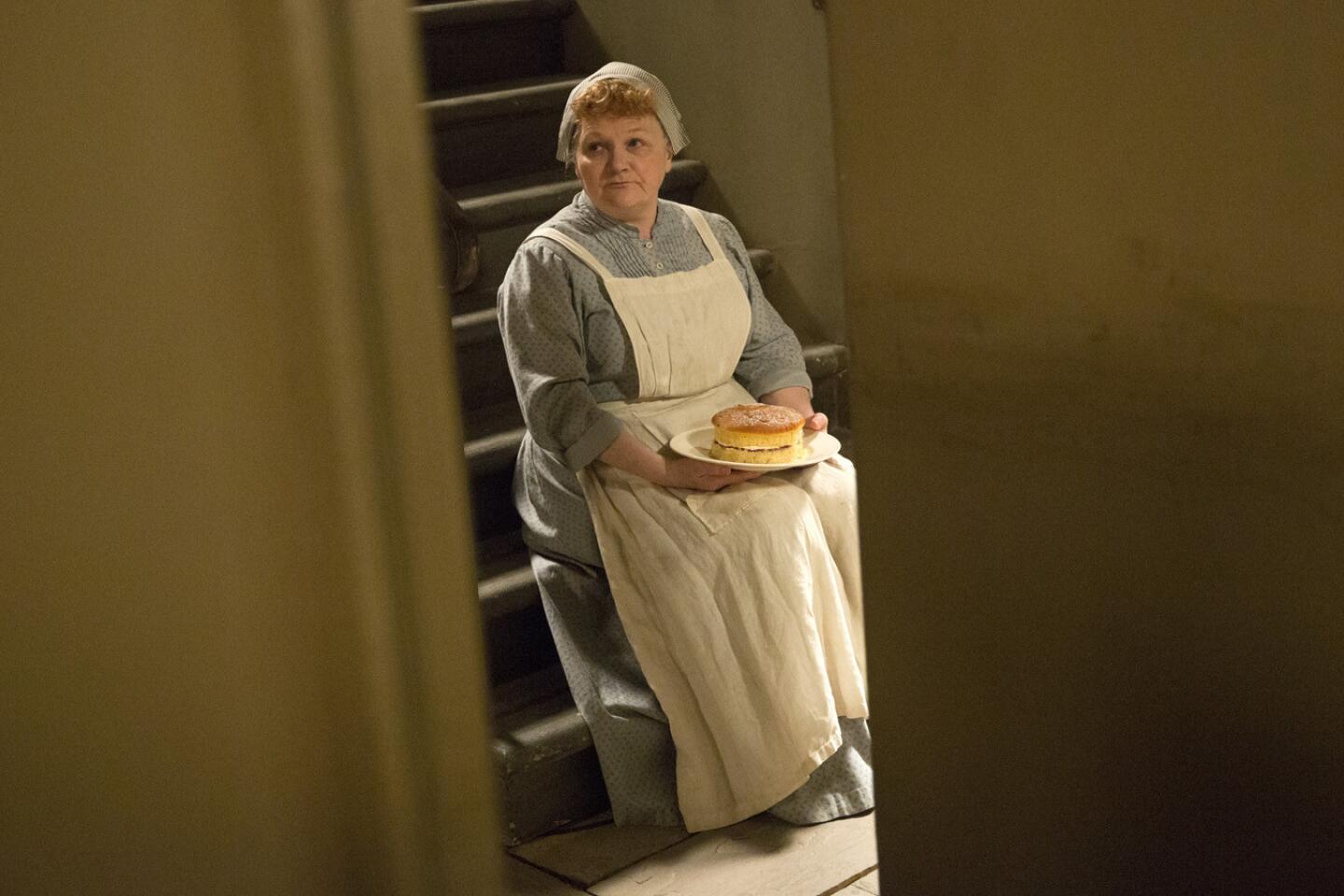Welcome back for a final visit to ‘Downton Abbey’
- Share via
HIGHCLERE, England — Laura Carmichael was relaxing in her trailer on the set of “Downton Abbey” when a disembodied voice suddenly boomed from the other side of the wall: “Have you got hot plans for tonight?”
It was her co-star Jim Carter, whose distinct baritone was muffled only slightly by the thin barrier between their adjoining dressing rooms, asking the sort of thing his character, the punctilious but lovable butler Carson, would never dare ask Carmichael’s Lady Edith.
Winter TV: Your guide to the new shows
But this being real-life 2015 and not fictional 1925, Carmichael welcomed the conversation, leaning toward the wall as she asked Carter to join her family and castmate Michelle Dockery for dinner at a local gastropub.
As if on cue, Dockery — in Lady Mary regalia from the neck up, jeans and a sweater from the neck down — knocked on the trailer door to say hello.
“We’re like the Waltons,” Carmichael joked.
More like the Windsors.
Since “Downton Abbey” debuted in the U.S. on PBS’ “Masterpiece” just a few months before the royal wedding in 2011, it has tapped into America’s latent Anglophilia almost as effectively as Will and Kate. Created and written by Oscar winner Julian Fellowes, a masterful observer of the British class system, the series chronicles life above and below stairs at a Yorkshire estate over the course of a tumultuous dozen years beginning with the sinking of the Titanic in 1912.
Like seemingly all British costume dramas, its primary concerns are, as “Masterpiece” executive producer Rebecca Eaton puts it, “love, betrayal and real estate.” But unlike so many other staid period pieces, it tackles these themes with a brisk pace and a sly wit that have made it uniquely appealing to contemporary audiences.
With an average of 12 million weekly viewers for Season 5, “Downton Abbey” ranks as the most-watched drama in PBS history and regularly outperforms its competitors on cable and commercial networks. It also does so without the benefit of zombies, dragons or gratuitous nudity — but who needs such crass entertainments when you’ve got Maggie Smith? “Downton Abbey” has been spoofed by Jimmy Fallon, “Sesame Street” and “The Simpsons,” and the cast has visited the White House — twice.
Envelope Screening Series: ‘Downton Abbey’

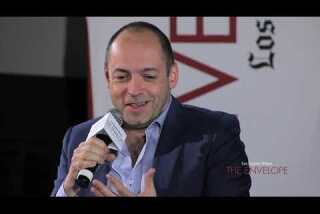
Screening Series: 'Downton Abbey': An unexpected home

Screening Series: 'Downton Abbey': Kate Middleton on set
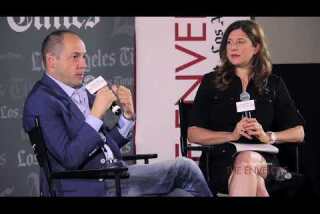
Screening Series: 'Downton Abbey': The cast
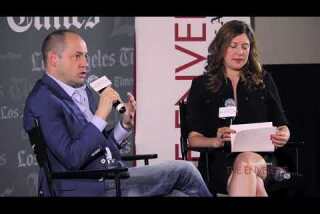
Screening Series: 'Downton Abbey': The future of the characters
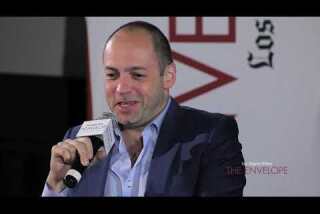
Screening Series: 'Downton Abbey' | The show is born
Alas, the end of this special relationship is in sight: The sixth and final season of “Downton Abbey” debuts Sunday on PBS. On location in Hampshire and West London last spring in the middle of production of the final season, the cast and crew were ready to move on yet also aware, like Lord Grantham witnessing the decline of the aristocracy, that they were leaving behind an experience unlikely to be replicated.
“I think we’ve all done pretty well in each other’s company, me and the cast,” Fellowes says. “If you get one show like ‘Downton Abbey’ or ‘Mad Men’ or ‘The Good Wife,’ and you get into people’s affections, then you’re a very, very lucky person.”
‘Downton’s’ origins
There was a time not so long ago — say, 2010 — when Highclere Castle, which sits high on sheep-dotted hill in the Hampshire countryside, was just one of England’s many great but forgotten houses.
Once best known for its Egyptology collection, the ancestral home of the Carnarvon family now draws thousands of visitors who pay up to 20 pounds (about $30) a pop for a glimpse of “the real Downton Abbey.” Even when the house is closed to the public, as it is when the show is in production, curiosity-seekers wind along the estate’s long drive, undeterred by numerous signs warning them to stay away.
“The irony is, the house has become so famous, we struggle to get in,” says executive producer Gareth Neame, striding through Highclere’s familiar saloon, the sight of so many dramatic moments on “Downton Abbey” but now cluttered with crates, camera gear and the odd tuxedo.
It was Neame who first approached Fellowes with the idea for an episodic series set at a great estate in the early part of the 20th century, a world Fellowes had explored to widespread acclaim in the 2001 film “Gosford Park.” “I wouldn’t have done this without Julian, because he’s the only person in the world who’s got the knowledge and understanding of how this works. He’s such a great social commentator,” Neame says later over lunch in Highclere’s tea shop.
The conversation is interrupted momentarily when Lady Carnarvon, the estate’s current chatelaine, pops by to fix herself an espresso. Carson no doubt would be horrified, but to contemporary eyes it’s a refreshingly normal sight.
British network ITV quickly gave the project a greenlight, though as executive producer Liz Trubridge points out, it was hardly thought of as a sure thing. It had been 25 years since a commercial channel in Great Britain had attempted a large-scale period drama along the lines of “Brideshead Revisited” or “The Jewel in the Crown.” And certainly no one had aimed for “Merchant Ivory meets ‘The West Wing,’” as Trubridge likes to describe “Downton Abbey.”
Still, there was a buzz around the project from its inception. “There was a sense we were part of something special,” recalls Dockery, her natural Essex accent a jarring contrast to Lady Mary’s cut-glass diction. Premiering on ITV in September 2010, “Downton Abbey” was an instant smash in Britain.
On this side of the pond, the series was initially more of a niche affair, embraced by the usual Anglophiles and English majors drawn to shows featuring women in corsets and men with funny facial hair, but it broke through to a more mainstream audience after winning six Primetime Emmys in 2011.
It also benefited from timing, Eaton says, premiering just as streaming was becoming widely available, making it easier for viewers to catch up with that British show they kept hearing about but before the full onslaught of “Peak TV” made it impossible to keep up.
From Season 1, which began as the heir to Downton Abbey was killed on the Titanic, throwing the estate’s future into uncertainty, to Season 3, which culminated with the traumatizing death of Mary’s husband, Matthew (Dan Stevens), weekly viewership more than doubled. “It has burnished ‘Masterpiece,’ which is the jewel in PBS’ crown, arguably at a time when it needed burnishing,” Eaton says of the franchise, which celebrates its 45th anniversary this month.
Each of the Abbeyites has a favorite anecdote that speaks to the show’s broad appeal. Dockery was recognized while on an Oxfam mission to a refugee camp in Jordan. Trubridge heard from a friend that “Downton Abbey” was huge in Lapland. Phyllis Logan, who plays shrewd housekeeper Mrs. Hughes, recently met Anthony Hopkins at Ealing Studios and was bowled over when he quoted her character back to her.
Neame attributes the show’s cross-cultural success to its break with the conventions of costume drama. “It’s not Charles Dickens or Jane Austen,” he says. “It’s very accessible. It is only like other ‘Masterpiece’ shows in the sense that it’s got old cars, horses and nice costumes.”
Indeed, one of the show’s selling points, in addition to Fellowes’ signature dialogue, is its rather progressive take on gender and sexuality; it never pretends as if premarital intercourse or gay people were first invented in the 1960s.
Likewise, the series is sympathetic to the plight of women in a time when few had access to birth control or the voting booth. Fellowes has an obvious talent for writing strong female characters — most notably, the eminently quotable Dowager Countess Violet, played by Smith, and the haughty Lady Mary but also the emotionally wise Mrs. Hughes and folksy cook Mrs. Patmore (Lesley Nicol).
“Obviously, there were just as many intelligent and ambitious and dynamic women back then as there ever are, but there were so many restraints,” Fellowes says.
Carter has his own theories about the show’s success.
“This whole thing is sort of about love stories in a way, isn’t it?” says the actor, whose character proposed to Mrs. Hughes in the Season 5 finale, capping off what he describes as “the slowest-burning romance ever” and fulfilling the dreams of fan fiction writers across the Internet. “I like having older characters with an emotional story,” he says. “It’s not true that the only people who fall in love or are still bruised are all 29 and gorgeous.”
For her part, Logan is flattered if a bit baffled by all the enthusiasm over the Carson-Hughes pairing. “You’d wonder that they’d be interested in a couple of old fogies like us,” she says in her lovely Scottish brogue. Logan was just as surprised by Fellowes’ decision to “give the audience what they want. I thought, knowing Julian, he’d probably go the opposite way.”
Fellowes certainly hasn’t been afraid to dash fans’ expectations, never so much as when he killed off Matthew in a shocking car accident. He was more than just Lady Mary’s love interest and the heir to Downton Abbey; as the middle-class protagonist new to the aristocratic lifestyle, he was also an important proxy for the modern-day audience. Some thought “Downton Abbey” should have died with him.
But in retrospect, Matthew’s death — the only feasible way to write off the character once Stevens decided not to renew his contract — helped breathe new life into the series and avoid what might be called the Ross and Rachel effect.
See more of Entertainment’s top stories on Facebook >>
“When you bring a couple together in a series, as any writer will tell you, they lose their usefulness because all the tension, the will-they-won’t-they, all of that’s gone,” Fellowes says. “In a sense, you have to create other issues that allow you to have some tension and some stuff that has to be worked out.”
As to what “stuff” Carson and Hughes might have to work through in the final season, Fellowes is mum. Carter, though, drops a subtle hint: “People in their 50s and 60s who’ve been lifelong bachelors and spinsters, it’s an odd thing for them.”
By any measure, “Downton Abbey” is a remarkable feat of creative stamina. Fellowes has written every episode for six seasons, for an eye-popping total of 63 hours of television.
The series has dramatized a turbulent span of British social history and has gotten “exponentially bigger and bigger” over the course of its run, notes Trubridge, with longer seasons and increasingly ambitious — read: expensive — set pieces each year. Think grouse-shooting parties, debutante balls, fox hunts, and in the season ahead, an elaborate car race.
It may grow even bigger yet: Fellowes is keen to make a “Downton Abbey” feature film and already has a concept in place. But, he is careful to add, the final season of the series will bring a “true ending” to the stories the audience has followed so intently for the last five years. “Of course, there will be a degree of sadness. By the same token, we all know that nothing lasts forever, and you want to leave them when they’re still sorry you’re going.”
------------
‘Masterpiece Classic’
Where: KOCE
When: 9 p.m. Sunday
Rating: TV-PG (may be unsuitable for young children)
ALSO:
Getting the ‘Bordertown’ cartoon right as border issues reemerge
Eva Longoria embraces the anything-can-happen atmosphere of ‘Telenovela’
‘11.22.63’ on Hulu revisits Kennedy assassination through Stephen King’s prism
More to Read
The complete guide to home viewing
Get Screen Gab for everything about the TV shows and streaming movies everyone’s talking about.
You may occasionally receive promotional content from the Los Angeles Times.

